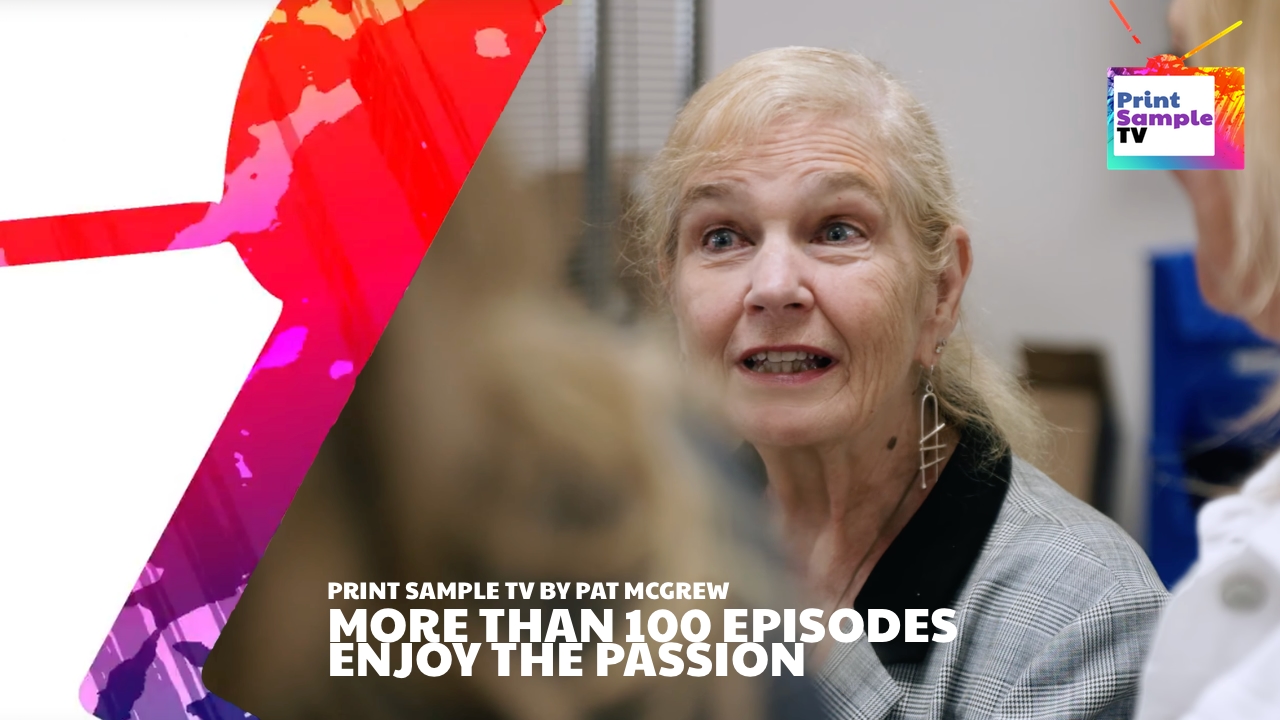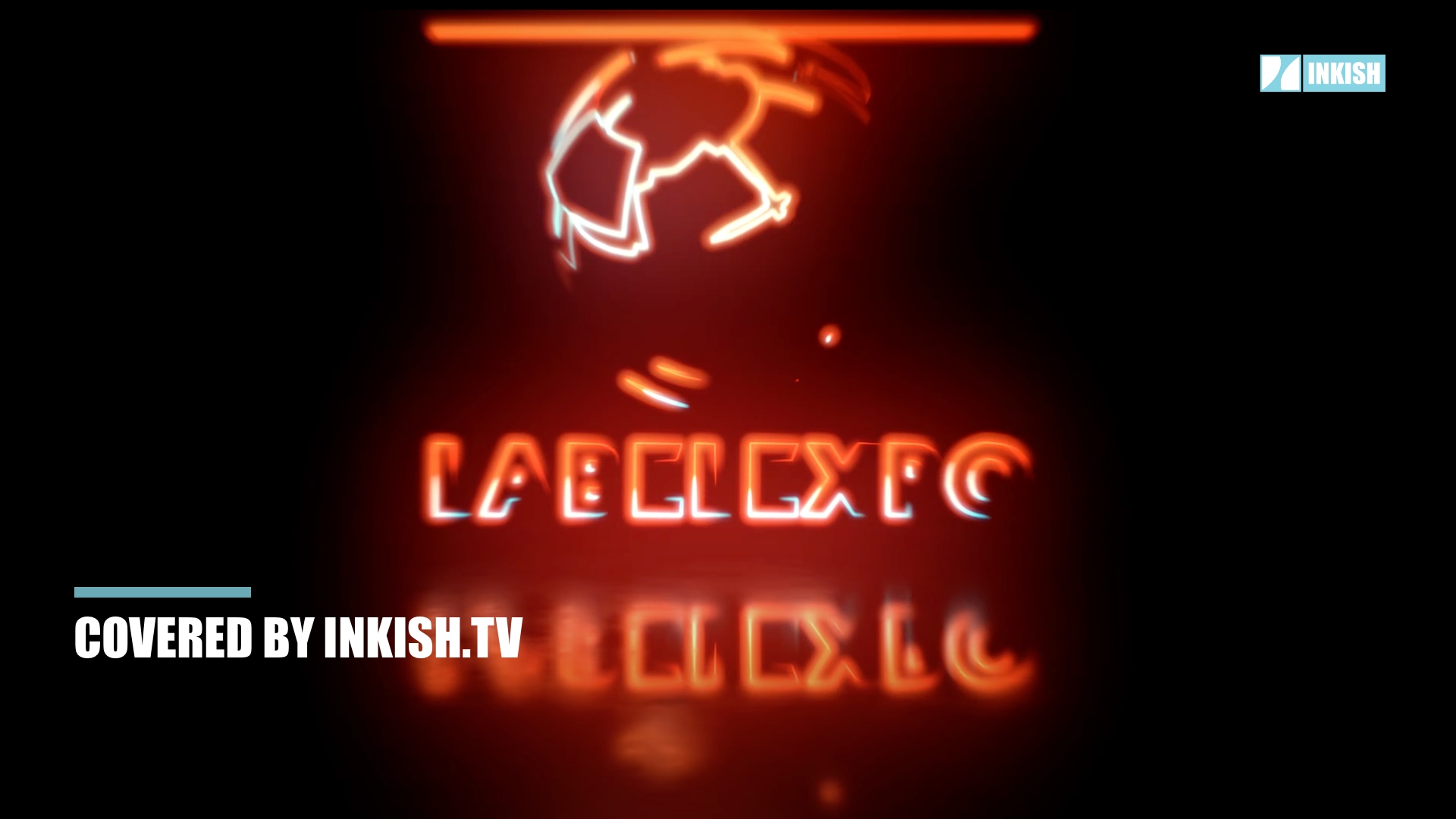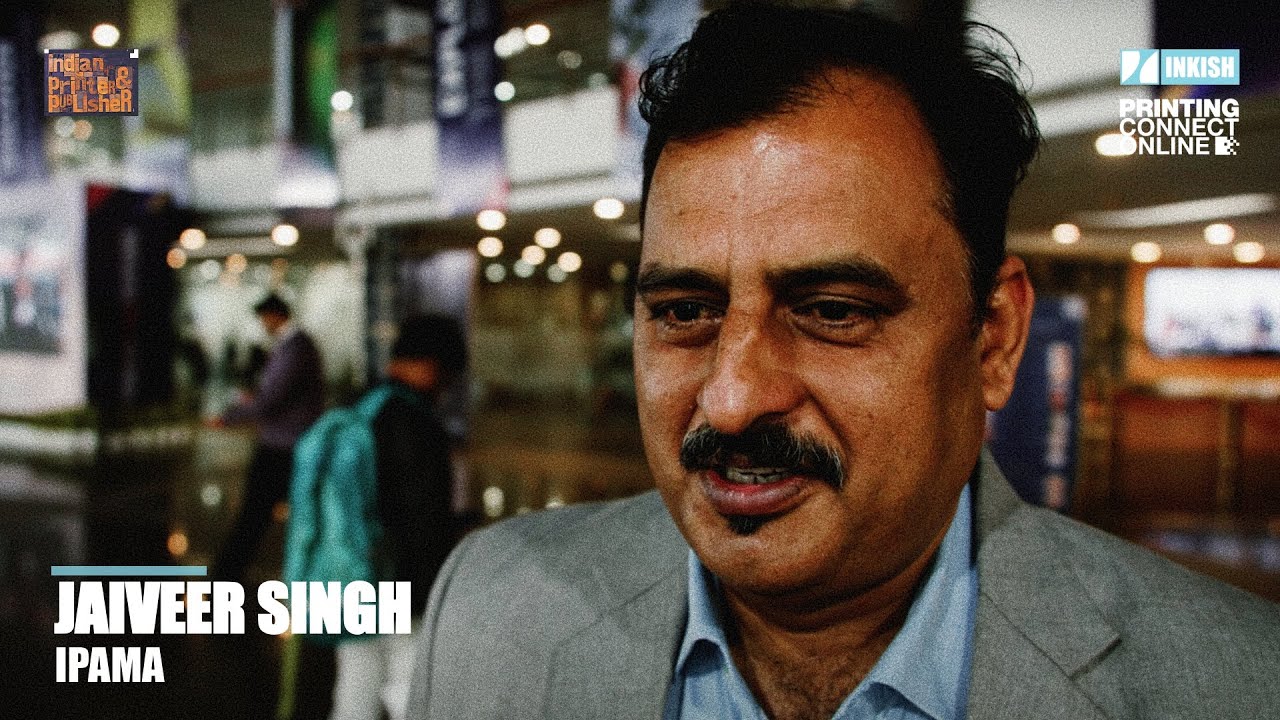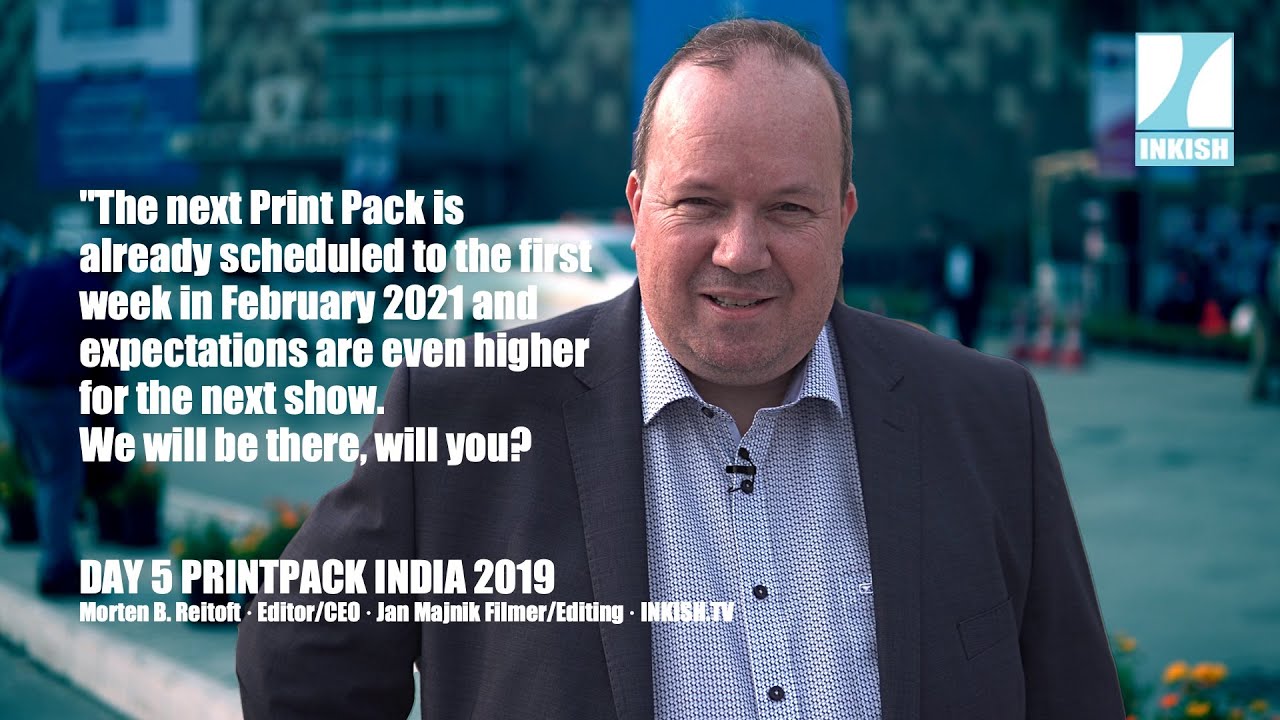INKISH.TV proudly presents S. Dayaker Reddy · President · IPAMA · India
PrintPack India 2019 was a tremendous success for the organizers IPAMA and in this Conversation editor, Morten Reitoft gets the chance to talk to President S. Dayaker Reddy. India is one of the largest markets for print and with more than 250.000 printing companies and growth in all segments – the words of the President is important. Mr. Dayaker Reddy also explain that Indian printing companies are investing in new technology and he believes that India will have a bigger role in the global printing industry over the next year. With almost 100.000 visitors at the recent PrintPack, the industry keeps supporting the event and the next one is already in planning – so stay tuned. INKISH will be there!
We are here at the 14th Print-Pack India 2019, and we’re talking to the president of everything, right?
Yeah.
How was the show for you this year?
First of all, team Inkish, we welcome you. I think that’s the fourth time you’ve been coming to our show. You must be witnessing now. A warm welcome from all our exhibitors, as well as visitors.
This edition, our exhibitors, as well as our visitors, are doing really great. The report says we have surpassed all the records in terms of sales, agreements, everything. So we are really happy the efforts of our team [inaudible 00:01:08] council members have been delivered last three days. And today, of course, the fourth day, tomorrow is the last day.
And Sunday evening you had this huge gala.
Yeah.
That was the best part.
Exactly.
Was it two thousand people there?
Yeah, it was a two thousand pack. Two thousand pack.
And there was both typical, traditional Indian music, and you also had almost Hard Rock.
Exactly. The reason for that is, we know we have a lot of foreign delegates. First time we have received more than 19 international delegates.
Nice.
19 international delegates, across the globe. So we wanted to give them that Indian touch. We wanted it to start with the traditional Ganesha [puja 00:01:53], then before you enter into the hall, it was Russian music.
That was the two women-
Exactly. Two women at the entrance exactly.
They were nice because there was a violin and a saxophone player. I would say not maybe typical Indian music, but more like music from my part of the world.
Exactly. We wanted to give this touch to entire international delegation, as well as the domestic delegation.
I always get surprised, because it was like a garden party in a nice place, Stellar Gymkhana. Gymkhana?
Yep, gymkhana.
And you served food for all these people. And it was nice food, and it was hot food.
Thank you so much. So you enjoyed it really?
Oh yeah I did. I thought you should have turned up the temperature a little bit more on the weather.
On the weather! Unfortunately, that was the coldest day last 45 days. Unfortunately.
It’s unfair. [crosstalk 00:02:48] And that just mean that to some extent, you can control a lot of things, because, I thank you for very much for your welcome, I think that … I can tell.
We feel really welcome here. We feel that both exhibitors and visitors have been both curious and interested in what we’re doing, so that was nice. You gave us permission to fly with the drone a couple of days ago. I tell you, there was a lot of people just to watch the drone.
I wanted to talk a little bit about the Indian print industry, because that’s why we’re here.
Exactly. Let me tell you, Mr. Marten … This edition, I’ll give you brief about this edition. We have 507 exhibitors from across the globe, and according to the reports, till today, we have already crossed more than 68, 69 thousand footfall, roughly.
So you would not get your get hundred thousand hundred, was that right?
Yeah, see we are always optimistic.
Okay, that’s good.
And we are talking about unique visitors. I’m not talking footfall, I’m talking about unique visitors. So obviously, even if I get 75, 78 thousand unique visitors, we are quite happy. Quite happy.
I totally understand that. But see, I was maybe not phrasing my question correctly, because I know that Print-Pack is a success. I know that you’re experiencing considerable growth from an exhibitor’s perspective, and I would like to talk about the exhibition in a moment. But can you tell us a little bit-
Indian. Indian industry.
Indian industry. So how many printing companies, and how many people working here, and how is the growth, or [crosstalk 00:04:25], how is it about that?
Very good question.
India is one of the biggest world sources for the print industry. Unfortunately, Indian print industry is not a organized sector, but according to our surveys and reports, we have more than 250 thousand printing presses across the country.
Just amazing.
Exactly.
So, the growth. Last couple of years, we are growing 16, 17, 18 percent.
I think that some of the European and American viewers right now, they must be so jealous, right?
Exactly. And I’ve been telling all my friends across the world, the future is India. The future is India. Especially the equipment suppliers. Future is India.
And our Indian clients, our Indian printers, are catering across the globe. Definitely, when you say competition with our neighboring countries, we are a little behind in international standards. But last six to seven years, I have seen the dramatic change in our industry.
When you say the dramatic change, is that also when it comes to both the quality-
Of course. Quality, investment, environmental. Everywhere. Everywhere. Now we are talking about eco-friendly print, we are talking about artificial intelligence. So the [inaudible 00:05:51] world is growing.
If you talk about 15 years back, a new technologies used to come India after seven, eight years’ existence. But today the technology launches across the globe.
That’s for sure.
Let me tell you, I’ll give you one small example. When Apple promotes any product across the globe, there will be huge queues. India, we don’t have any queue. What means we’re adopting everything before.
We are up to date in the market, so our people are adopting, and we are quite happy that our Indian print friends are really growing, and the numbers of installations of equipment is growing. At the same time, our Indian manufacture’s also growing across the globe. As a IPAMA, we are providing across the globe. I’ll talk those things and other things.
And especially when you talk about segment-wise, it’s very big. Printing is a big segment. Now we have huge growth in digital segment, and the packaging segment, and the label segment. Label and packaging, we are anticipating the growth of next five to seven years would reach 85 percent, where at the moment, we are 19 percent.
That’s fantastic.
When you compare with the level of nations like Europe and U.S. So we had huge scope of … that 71 percent is a cushion we have.
All the things you mention now, is that … I have two things I would like to talk to you about in that perspective.
One of the things is, if you go to for example some of the other international exhibitions, you see a decreasing number of visitors. And one of the questions I keep asking the presidents of those events … If you look at Rupa, it went from … four times ago, it was like 445 thousand-
It has reduced half.
[crosstalk 00:07:56] had an amazing drop, right?
Yeah. Exactly.
And I was just wondering, in your opinion, and I guess you will say yes, but is there a need for exhibitions?
It’s a very good question. In our Print-Pack, our growth is regularly [inaudible 00:08:11]. The reason being is, Print-Pack is moving with closely associated all segment associations. Now if-
So that’s why you say [crosstalk 00:08:24] that makes it important to have exhibitions.
Print-Pack is a show in the world. You are a best judge for that. You can see corrugation. You can see label. You can see flexible packaging. You can see screen printing, digital, offset, security.
Print-Pack is only a show. I would not bet anyone, but we are very proud to say that being a machine manufacturers, our numbers are related to all segments, and now we are very closely working with all the different associations.
That is the reason every year we are growing. And steady growth.
That is one of the things I like about coming to Print-Pack. When you go to some shows, where they only have two or three days, there is a limited number of presses being [crosstalk 00:09:13]. What I like here is, you have the [inaudible 00:09:16], because you have a lot of demos and live equipment and the smell of ink, and you see the [inaudible 00:09:23], and a lot of people interested in new technologies that are there.
It must be encouraging for you to see that you are able to make such a nice event, and that you can see that visitors are taking up your challenge and come and visit you. Because you see the growth in number of visitors, you see the growth in number of stalls, you see the number in the entire industry growing.
That leads me to the second question I wanted to talk to you about.
I can’t remember who, but a couple of days ago I was asked, “How do you see the Indian print industry in the next 10 years?” And I said, “I have no background for saying anything, but I’m just saying that if you take the same trends, if you just say that India is maybe a little behind Europe and the U.S. market, and then you go into the Indian market and look at the future, you will maybe, instead of having 250 thousand printing companies, you will have 25 thousand printing companies.”
I know that is not the case, but there will be mergers and acquisitions, there will be changes in the market. Do you think that the society and the printing company owners … You have a very family-type relations to running operations. Do you think those trends that we have seen in the global print industry will be similar here?
Of course. It is already done. Last couple of years, there was a lot of [inaudible 00:10:42] has been happening print industry also.
So the trends are already taking place?
Yeah. Yeah, already taking place. So it’s a good sign.
You asked a really good question. We are like a family business, but people who had a vision, they’re changing from that perception to the global [inaudible 00:10:58].
For example, some of your exhibitors are also printers. Service providers. And when you look at the offerings they’re offering … I know that’s a little prejudiced on it, but sometimes when you see Indian as a brand or you look at India, it’s like sometimes an equation. “Equals cheap,” right?
Because you have a one point three billion population, you have a income span that goes from very very cheap to very very rich people. But would you say that … Because also if you look at China, their development of the domestic market and the domestic economies and the middle class has a huge impact on the entire society. Do you feel that the society and the printing industry here is also moving towards maybe bigger units and … don’t take me wrong when I say unprofessional manage, but in my country, it also used to be family-operated companies, but it becomes more like professional [crosstalk 00:12:08]. Not negatively meant, but you know, managed not from a family perspective, but more from a money perspective.
It is happening. It is happening, and this is the time where you can see a lot of FDIs, a lot of joint ventures. A lot of joint venture is happening now. It’s already happening [inaudible 00:12:25].
Our biggest advantage is our population. You will never have a problem of manpower. Still, we have to go the next level where full automation is required. In printing, yes, I do agree, when you talk about 250 thousand, the percentage of fully automation is not that up to the mark, but last couple of years, the change what I have seen is phenomenal.
We reached to a certain technology, earlier, 15 years. These days we reach in one year. That fast mode has come, which is a very good sign for [inaudible 00:13:05], and we are proud to say as a association, next to 2022, India would be on the top three.
India is going to be on the top three. And I am proud to say that the one, two, three, four, all are from Asia. All are from Asia.
I have to admit that I’m from a small country in Europe, and I will be the loser in the long term, right?
No, it’s not the question of either you lose or we win. I know, I know. It is a part of time.
[crosstalk 00:13:33] you appreciate [inaudible 00:13:34] I’m just saying that [crosstalk 00:13:38] be number one all of those, right?
Exactly. Every time you can’t be number one. You know, Usain Bolt can’t be run for all the thousand years. He has his own life.
So the circle will [inaudible 00:13:48]. The time has come now for this continent.
One of the things I like about what you’re saying is that, not only from a domestic but also from a global perspective, Indian industry is now looking outside India as well.
Of course.
Both from a vendor’s perspective, but also from a service provider’s perspective. But I also think that one of the changes that have changed a lot in India since Modi became Prime Minister is also that you’re more open towards investors from the outside. Right?
Exactly.
When you see, we spoke about just before that, Heidelberger’s exhibiting here for the first time, Koenig & Bauer’s exhibiting for the first time. From non-Indian companies. From the next editions of Print-Pack, do you expect more foreign companies to be here?
Sure. Definitely. In fact, this year we put a lot of efforts to bring as many as foreign companies. But unfortunately, as we take on the challenge of creating a federation [inaudible 00:14:48] IPAMA, I have spent a lot of time on that, our team has spent. So this year, we are focusing only on international delegation. Purely on international delegation. And I’m sure we will increase the numbers as international exhibitors, from nowhere to maximum numbers.
What really has been nice being here is, almost every person, people you talk to, are so positive about both the present and the future. It sounds like you have … I don’t know if it’s just because of your market position in general, or you’re fortuned, or you are clever, or it’s a mixture of the three, but in your opinion, where do you see the Indian printing industry developing in the nearby future?
As I said earlier, like six, seven years, definitely we are going to do-
Sorry, yeah. I know you answered that question, but I was thinking, are you moving towards more digital, or is that subsidizing the [inaudible 00:15:59] analog market, or is it a growing market on all still?
That’s what I said, packaging and label. We are going to do much, much better. If you take Essel Propack, they are running already. In 22 countries across the globe, they have a plant. Which is a [ZTB 00:16:19] subsidiary. So we are expecting lot of changes in our coming years, especially in packaging side and flexible packaging side.
So Inkish must be back in two years’ time?
Absolutely. You will be, you will be. I really love, and I thank you, and our international media, and our friends across the association of the country, our global print, our Asia print. They have all …
The success won’t come from the individual. Success is a team. So I strongly believe, our team strongly believe, that this success was to everyone who has been participated, including Inkish. Thank you.
Thank you very much. It was nice.









































































